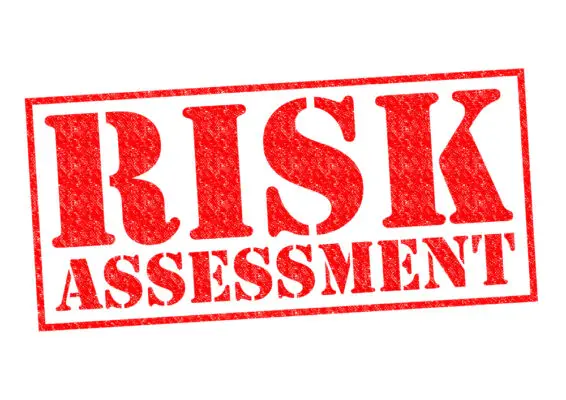This article presents a comprehensive nitrosamine risk assessment checklist. The checklist aims to assist marketing authorization holders (MAHs) and drug product manufacturers (DPMs) in evaluating and managing the potential presence of nitrosamine impurities.
Nitrosamines are a class of chemical compounds identified as potential carcinogens. They have gained significant attention in the pharmaceutical industry due to their potential health risks.
Through a systematic risk evaluation process and the implementation of an effective control strategy, MAHs and DPMs can ensure the safety and quality of their products.
This checklist provides a step-by-step approach to identifying and mitigating nitrosamine risks.
Following this checklist, MAHs and DPMs can proactively address the potential presence of nitrosamine impurities in their drug products.
This will help them meet regulatory requirements and protect the health of patients.

What are nitrosamines?
A risk assessment checklist is a systematic tool to evaluate potential hazards and risks associated with a particular substance or activity.
It is designed to identify and analyze the likelihood and severity of these risks, enabling informed decisions regarding risk management strategies.
The checklist typically includes a series of questions or criteria that need to be considered, such as the nature of the substance, its potential health effects, and the level of exposure or usage.
What is a risk assessment checklist?
Risk assessment checklists are tools to systematically identify, evaluate, and mitigate potential risks associated with a particular activity, process, or product.
In the context of nitrosamines, a risk assessment checklist is utilized to assess the presence of nitrosamine impurities in pharmaceuticals, cosmetics, and other products.
This checklist guides the evaluation of the manufacturing process, materials used, and control strategy employed to minimize the presence of nitrosamines.
It ensures that the risk evaluations are conducted comprehensively and structured, considering factors such as the acceptable intake levels of nitrosamines.
Additionally, the checklist aids in preparing regulatory submissions by providing a framework for documenting the risk assessment process and the control measures implemented to ensure product safety.
Sources of Nitrosamine Impurities
This focuses on the sources of nitrosamine impurities, specifically in relation to active substances, manufacturing processes, and finished products.
Active substances can be a potential source of nitrosamines, as they may contain precursors or impurities that can form nitrosamines under certain conditions.
Manufacturing processes also play a significant role in forming nitrosamines, as certain conditions and reactions can promote the generation of these impurities.
Lastly, finished products may contain nitrosamine impurities if they were not adequately controlled or if there were issues in the manufacturing process that led to their formation.
Active Substance-Derived Nitrosamines
Active substance-derived nitrosamines are a significant concern in pharmaceutical risk assessment. Nitrosamine impurities can originate from various sources, including the manufacturing processes of medicines.
These impurities are formed when amines, such as secondary or tertiary amines, react with nitrite or nitrous acid.
Marketing authorisation holders are responsible for ensuring the safety of their products, including assessing the risk of nitrosamine impurity.
Nitrosamines in active substances can pose a potential risk to patient’s health. Therefore, it is crucial to monitor and control the levels of nitrosamines during the manufacturing process to prevent their formation.
Regulatory authorities have set specific limits for the presence of nitrosamines in pharmaceutical products to safeguard public health and ensure the quality of medicines.
Manufacturing Processes
One important aspect to consider in pharmaceutical manufacturing is optimising the various processes involved. Manufacturing processes are crucial in preventing and controlling nitrosamine impurities in drug products.
Drug product manufacturers must assess nitrosamine contamination risk throughout manufacturing to ensure product quality and patient safety.
This includes evaluating the potential sources of contamination, such as active substances and manufacturing components.
Quality risk management principles should be applied to identify and prioritize the critical steps for introducing nitrosamine impurities.
Factors such as synthetic routes, materials permeability, and process conditions should be thoroughly evaluated to minimize the risk of nitrosamine formation.
A table summarizing the key factors and their impact on nitrosamine risk can provide a comprehensive overview and aid decision-making.
| Factors | Impact on Nitrosamine Risk |
|---|---|
| Synthetic routes | High |
| Materials permeability | Medium |
| Process conditions | Low |
| Manufacturing components | Medium |
Finished Product
The finished product in pharmaceutical manufacturing is a critical component that requires careful evaluation to meet quality and safety standards.
Several factors must be considered to assess the risk of nitrosamine impurities in the finished product.
- Manufacturing process: The specific manufacturing process used can influence the risk of nitrosamine formation. Certain process steps, such as using specific reagents or solvents, may increase the likelihood of nitrosamine contamination.
- Raw materials: The quality and origin of raw materials used in producing the finished product play a significant role in determining the risk of nitrosamine contamination. Raw materials from certain sources or with a history of nitrosamine impurities pose a higher risk.
- Control measures: Implementing appropriate control measures during manufacturing, such as thorough cleaning procedures and regular testing for nitrosamine impurities, can help mitigate the risk of contamination.
Carefully evaluating these factors and conducting thorough risk assessments, the pharmaceutical industry can ensure the finished product meets the required quality standards and minimizes the risk of nitrosamine formation and contamination.
Risk Evaluations
This will focus on the risk evaluations of nitrosamine impurities in pharmaceutical products.
The first key point to consider is the risk of nitrosamine impurity formation, which refers to the likelihood of these impurities being produced during manufacturing.
The second key point is the risk of nitrosamine contamination, which refers to the potential for these impurities in the final product.
Both risks must be carefully evaluated and managed to ensure the safety and quality of pharmaceutical products.
Risk of Nitrosamine Impurity Formation
The risk of nitrosamine impurity formation is a crucial factor to consider in the nitrosamine risk assessment checklist.
Nitrosamines are potentially carcinogenic compounds that can be formed during the manufacturing process of certain drugs, especially those containing certain active pharmaceutical ingredients (APIs).
To emphasize the importance of this risk, the checklist includes three sub-lists:
- Limits for nitrosamines: The checklist should outline the acceptable nitrosamine intake limits for different drug products and their corresponding APIs.
- Formation of nitrosamines: The checklist should include an assessment for nitrosamine impurities, focusing on identifying the potential sources and mechanisms of nitrosamine formation during drug manufacturing.
- Contamination with nitrosamines: The assessment should also consider the risk of contamination of the drug product with nitrosamines, including evaluating the adequacy of cleaning procedures, cross-contamination prevention measures, and analytical methods for detecting nitrosamine impurities.
Adhering to these sub-lists, the nitrosamine risk assessment checklist can provide a comprehensive evaluation of the formation of nitrosamine impurities and help ensure the safety of drug products.
Risk of Nitrosamine Contamination
Nitrosamine contamination potentially threatens the safety and quality of drug products. It is important to assess the risk of nitrosamine contamination to safeguard patients’ health.
Nitrosamines can be formed during the production of drug products, as well as through the use of raw materials and active substances that contain nitrosamine impurities.
Therefore, it is crucial to implement procedures that minimize the risk of nitrosamine contamination in the manufacturing process.
This includes conducting thorough assessments of raw materials and implementing robust analytical methods to detect and quantify nitrosamines in medicines.
Regulatory authorities require marketing authorization holders to evaluate the risk factors associated with nitrosamine contamination and take appropriate measures to mitigate them.
Following these guidelines, the risk of nitrosamine contamination can be effectively managed and controlled to ensure the safety and quality of drug products.
Control Strategy for Marketing Authorization Holders (MAHs) and Drug Product Manufacturers (DPMs)
This discussion will focus on the control strategy for Marketing Authorization Holders (MAHs) and Drug Product Manufacturers (DPMs) regarding risk assessments, answers for Marketing Authorization Applications (MAA), limits for nitrosamines in high-volume drug products, and acceptable intake/daily intake limits.
Risk assessments are crucial in identifying and evaluating potential risks associated with nitrosamines in drug products.
MAHs and DPMs need to provide comprehensive answers in their MAA regarding the presence of nitrosamines and their control measures.
Establishing limits for nitrosamines in high-volume drug products is essential to ensure the safety and quality of these products.
Acceptable intake/daily intake limits are crucial in assessing the risk posed by nitrosamine exposure to patients.
Risk Assessments
Risk assessments are crucial in evaluating the potential risks associated with nitrosamines. These assessments provide a systematic approach to identifying and evaluating potential sources of nitrosamines in medicinal products.
The nitrosamine risk assessment checklist is used to assess the risk effectively. This checklist answers marketing authorisation holders and drug product manufacturers regarding the potential sources of nitrosamines in their products.
It includes a list of potential sources such as active substance-derived nitrosamines, high-volume drug products, secondary amines, tertiary amines, and primary amines.
The checklist also highlights the importance of using sensitive methods to detect nitrosamines and controlling potential sources such as nitric acid, nitrous acid, and packaging components.
Implementing a risk assessment plan and controlling potential sources of nitrosamines, the safety of medicinal products can be ensured, protecting public health from the potential adverse effects of nitrosamine contamination and cross-contamination.

Answers for Marketing Authorisation Applications (MAA)
Marketing Authorisation Applications (MAA) require comprehensive answers regarding the potential sources of nitrosamines in medicinal products to ensure these products’ safety and protect public health.
The European Medicines Agency (EMA) has guided this matter through a question-and-answer document and a detailed response template.
These resources aim to assist pharmaceutical industry stakeholders in conducting thorough nitrosamine risk assessments.
One important aspect of this process is evaluating the active substance source, which significantly determines the risk evaluation outcomes.
The nitrosamine risk assessment checklist, included in the guidance document, provides a structured approach for assessing the potential presence of nitrosamines and implementing appropriate risk mitigation measures.
Following this checklist and providing detailed evaluations in their marketing authorisation applications, pharmaceutical companies can ensure the safety and quality of their products.
Limits for Nitrosamines in High-Volume Drugs Products
Establishing limits for nitrosamines in high-volume drug products is crucial for ensuring the safety and quality of these medications.
Nitrosamines are a class of potentially carcinogenic compounds that can be formed during drug manufacturing.
The presence of nitrosamines in drug products poses a potential risk to patients, and therefore, it is essential to assess and control their levels.
The nitrosamine risk assessment checklist provides a systematic approach to identifying and evaluating the potential risk of nitrosamine contamination in drug substances and finished products.
The assessment report considers factors such as the active substance-derived nitrosamines, potential nitrosamine formation during drug product manufacturing processes, and the limits that need to be established to minimize the risk.
Setting appropriate limits, regulatory authorities can ensure the safety and quality of high-volume drug products, protecting patients’ health.
Acceptable Intake/Daily Intake Limits
One important aspect to consider when establishing limits for nitrosamines in high-volume drug products is the acceptable or daily intake limits.
The daily intake limits refer to the maximum amount of a substance that can be consumed daily without causing harm to the individual.
This is particularly relevant in the case of nitrosamines, as they are known human carcinogens.
Active substance-derived nitrosamines can be found in high-volume drug products such as ranitidine at levels that exceed the acceptable intake limits.
Therefore, manufacturers of active pharmaceutical ingredients (APIs) must assess the potential presence of nitrosamine impurities and take appropriate measures to ensure compliance with the daily intake limits.
This involves analyzing the route of synthesis and impurities in pharmaceuticals to mitigate the risk of nitrosamine contamination and protect public health.
Frequently Asked Questions
Are nitrosamines naturally occurring substances?
Nitrosamines are not naturally occurring substances. They are formed through chemical reactions between nitrites and secondary amines, often found in processed foods, tobacco smoke, and certain industrial processes.
How do nitrosamines pose a risk to human health?
Nitrosamines pose a risk to human health through their potential carcinogenicity. They can be formed in various ways, including consuming certain foods or exposure to certain chemicals. The extent of the risk depends on the level and duration of exposure.
Are there any regulatory limits for nitrosamine impurities in pharmaceutical products?
Yes, there are regulatory limits for nitrosamine impurities in pharmaceutical products. These limits are set by regulatory agencies such as the FDA and EMA to ensure the safety of these products for human consumption.
What steps can pharmaceutical companies take to prevent nitrosamine contamination?
Pharmaceutical companies can prevent nitrosamine contamination by implementing a comprehensive quality control system.
This system should include rigorous testing for nitrosamine impurities, evaluating the risk of potential sources, implementing preventive measures, and conducting regular audits to ensure compliance.
What are some potential consequences for pharmaceutical companies if they fail to comply with nitrosamine regulations?
Failure to comply with nitrosamine regulations can have serious consequences for pharmaceutical companies.
These may include product recalls, loss of consumer trust, legal penalties, damage to reputation, and potential impact on public health and safety.

Conclusion
The nitrosamine risk assessment checklist provides a comprehensive framework for evaluating the potential risks of nitrosamine impurities in pharmaceutical products.
This checklist is a valuable tool for ensuring the safety and quality of metformin-containing medicines and other pharmaceutical products throughout their life cycle.
To effectively utilize this checklist, pharmaceutical companies should consider the following key points:
- Reviewing the product portfolio: Identifying all products that contain nitrosamine impurities and assessing their potential risk levels is essential.
- Understanding nitrosamine formation: Companies must thoroughly understand the mechanisms behind secondary amine formation and the potential sources of tertiary amine contaminants.
- Ensuring regulatory compliance: Compliance with regulatory requirements, such as those outlined by Health Canada, is crucial to maintain marketing authorization for pharmaceutical products.
- Implementing risk mitigation strategies: Companies should develop strategies to minimise nitrosamine impurities in their products, such as conducting regular testing and implementing appropriate manufacturing controls.
Following this checklist, pharmaceutical companies can effectively manage and mitigate the risks associated with nitrosamine impurities in their products, ensuring the safety and well-being of
Nitrosamines are a group of chemical compounds found in various products, including food, tobacco, and pharmaceuticals. They are known to be potentially carcinogenic and risk human health.
This article discussed the sources of nitrosamine impurities and the importance of conducting risk evaluations.
It also highlighted the control strategy that marketing authorization holders and drug product manufacturers should adopt to minimize the presence of nitrosamines in their products.
Companies must prioritize the safety and quality of their products by adhering to strict regulations and guidelines regarding nitrosamine levels.

Chris Ekai is a Risk Management expert with over 10 years of experience in the field. He has a Master’s(MSc) degree in Risk Management from University of Portsmouth and is a CPA and Finance professional. He currently works as a Content Manager at Risk Publishing, writing about Enterprise Risk Management, Business Continuity Management and Project Management.
